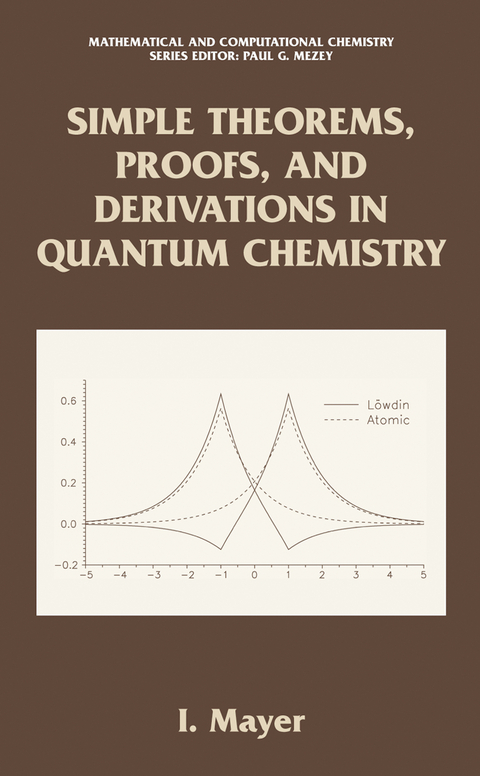
Simple Theorems, Proofs, and Derivations in Quantum Chemistry
Springer-Verlag New York Inc.
978-1-4419-3389-8 (ISBN)
1. The Born-Oppenheimer Hamiltonian.- 2. General Theorems and Principles.- 3. The Linear Variational Method and Löwdin’s Orthogonalization Schemes.- 4. Perturbational Methods.- 5. Determinant Wave Functions.- 6. The Hartree-Fock Method.- 7. Population Analysis, Bond Orders, and Valences.- 8. The Electron Correlation.- 9. Miscellaneous.- Appendices.- I. Separating the motion of the center of mass in classical mechanics.- II. Reducing the two-body problem to two one-body ones in classical mechanics.- III. Analogy between differentials and variations.- IV. Euler’s theorem for homogenous functions.- V. The virial theorem in classical mechanics.- VI. The electronic Schrödinger equation in atomic units.- VII. The “bra-ket” formalism.- 1. Dirac’s “bra” and “ket” vectors.- 2. Analogy with the matrix formalism.- 3. The use of an overlapping basis.- 4. Example of using the bra-ket formalism: The hypervirial theorem.- 5. Projection operators.- 6. Resolution of identity.- 7. Spectral resolution of Hermitian operators.- 8. The case of non-Hermitian operators—biorthogonal sets of functions.- 9. The trace of the projector.- VIII. Collection of formulas for Rayleigh-Schrödinger perturbation theory (nondegenerate case).- IX. Direct products of matrices.- X. Permutations.- XI. An orthogonalization algorithm.
| Erscheint lt. Verlag | 6.12.2010 |
|---|---|
| Reihe/Serie | Mathematical and Computational Chemistry |
| Zusatzinfo | XIII, 337 p. |
| Verlagsort | New York, NY |
| Sprache | englisch |
| Maße | 178 x 254 mm |
| Themenwelt | Naturwissenschaften ► Chemie ► Physikalische Chemie |
| Naturwissenschaften ► Physik / Astronomie ► Atom- / Kern- / Molekularphysik | |
| Naturwissenschaften ► Physik / Astronomie ► Plasmaphysik | |
| Naturwissenschaften ► Physik / Astronomie ► Quantenphysik | |
| ISBN-10 | 1-4419-3389-1 / 1441933891 |
| ISBN-13 | 978-1-4419-3389-8 / 9781441933898 |
| Zustand | Neuware |
| Haben Sie eine Frage zum Produkt? |
aus dem Bereich


